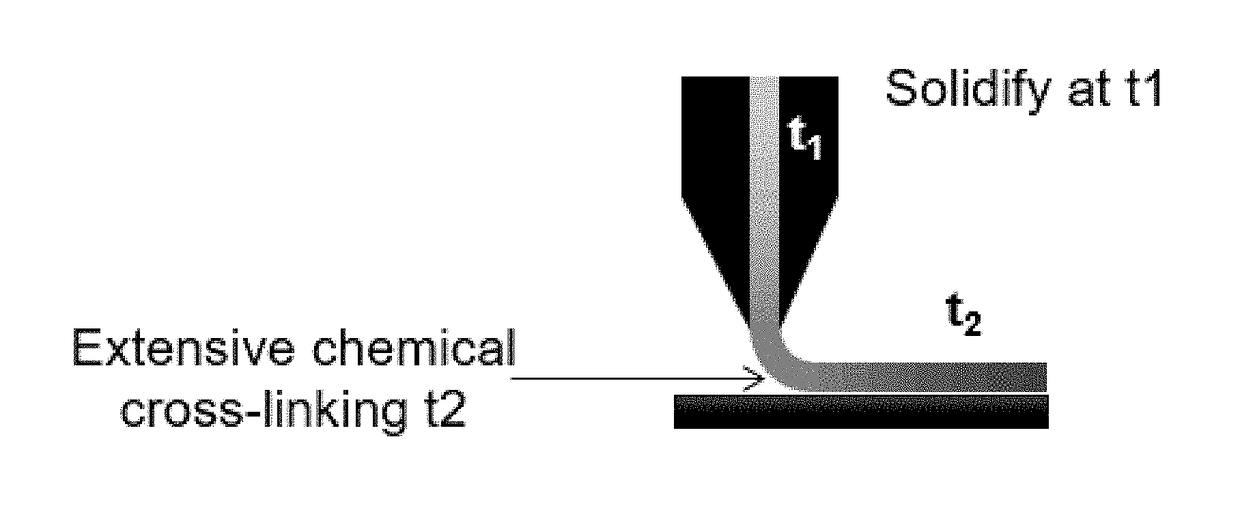Bonded permanent magnets produced by additive manufacturing
- Summary
- Abstract
- Description
- Claims
- Application Information
AI Technical Summary
Benefits of technology
Problems solved by technology
Method used
Image
Examples
example 1
on and Analysis of Polyurea-Based Polymer Systems
[0047]Multi-component poly(urea)-based systems for direct print additive manufacturing were determined to be feasible and in some aspects superior to traditional polymer additive manufacturing. The reaction kinetics and transient rheological properties are tunable via slight modifications in chemistry and / or thermal profiles after mixing the amine and isocyanate based components. Four amines and four isocyanates of varying viscosity and reactivity were studied. The identities of the amines and isocyanates and their properties are provided in Tables 1 and 2 below, respectively. The reaction kinetics, flow profile, and printability of various component mixtures and mechanical properties of cast neat and reinforced additively manufactured parts using these amines and isocyanates were studied.
TABLE 1Precursor Amine CompoundsRelativeTradeDesig-Equiv.reactivityNAMEnationWeightViscosity1 = highestNH 1220A229150 cps @ 25° C.1NH 1420B2771000-1...
example 2
rmanent Magnet Fabrication
[0061]Polymer bonded magnets were produced by extrusion using commercial anisotropic magnet powder (Magnequench™ MQA) mixed with B2, C2, and C4 isocyanate-amine combinations. The initial magnetic properties of the MQA powder was determined with a SQUID magnetometer. The as-received MQA powder has an intrinsic coercivity (Hci) of 12 kOe and a remanence (Mr) of 12.9 kG. The powder was rated for a (BH)max of 38 MGOe. Different vol % (30, 40, 60, and 65) of MQA powders were mixed with C4 isocyanate-amine polymer mixtures using a magnetic stirrer. Unaligned bonded magnet samples were aligned in a field of 9 T overnight. C4 polymers cross-linked and cured while the magnet powders were aligned. Magnetization was measured for each sample at constant applied magnetic field. Similarly, 40 vol % MQA powders were mixed with B2 and C2 isocyanate-amine polymer mixtures and aligned in a magnetic field. Curing times for each of the poly(urea)-NdFeB bonded magnets are repor...
PUM
| Property | Measurement | Unit |
|---|---|---|
| Magnetic field | aaaaa | aaaaa |
| Structure | aaaaa | aaaaa |
| Viscosity | aaaaa | aaaaa |
Abstract
Description
Claims
Application Information
 Login to View More
Login to View More - R&D
- Intellectual Property
- Life Sciences
- Materials
- Tech Scout
- Unparalleled Data Quality
- Higher Quality Content
- 60% Fewer Hallucinations
Browse by: Latest US Patents, China's latest patents, Technical Efficacy Thesaurus, Application Domain, Technology Topic, Popular Technical Reports.
© 2025 PatSnap. All rights reserved.Legal|Privacy policy|Modern Slavery Act Transparency Statement|Sitemap|About US| Contact US: help@patsnap.com



